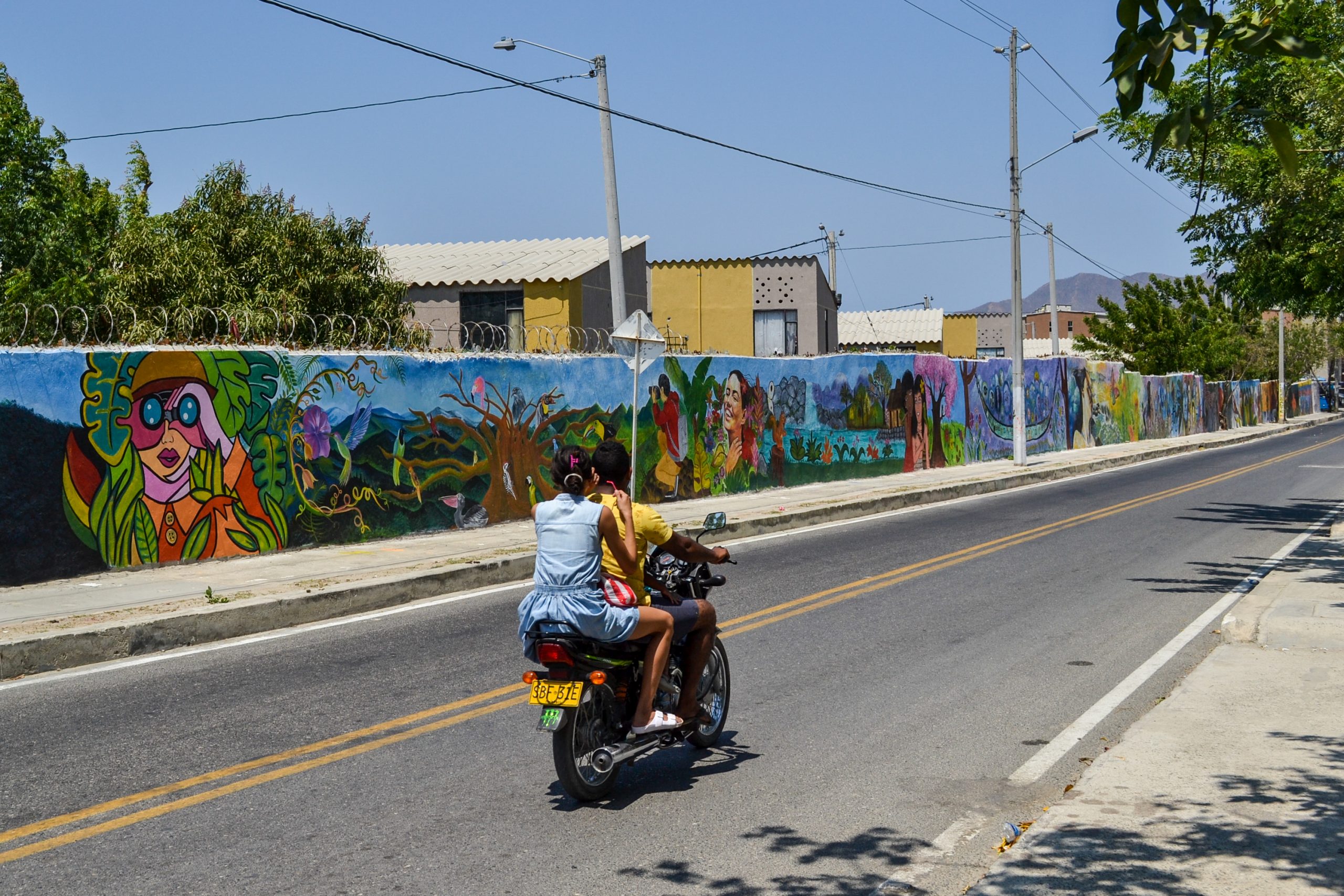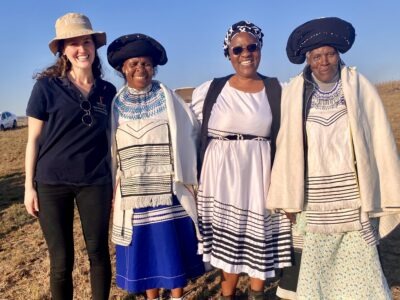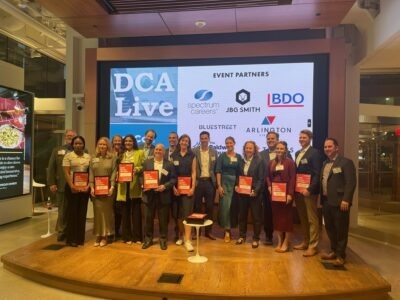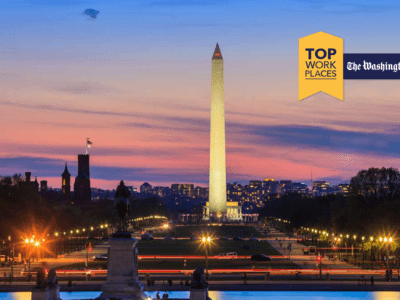
Along Colombia’s Caribbean coast, the Sierra Nevada de Santa Marta is the highest coastal mountain range in the world and a tourism destination, especially for birders hoping to catch a glimpse of its endemic bird species.
On the road from the city of Santa Marta to the mountain range, you’ll pass through Ciudad Equidad, a community with approximately 20,000 residents living in one of the largest free housing projects in the country.
The neighborhood is made up of people from diverse backgrounds, the majority of whom are families displaced by decades of armed conflict between the government, paramilitary, guerilla groups, and others, who reached a peace agreement in 2016. Other residents include migrants from neighboring Venezuela and victims of domestic violence — all living in close manzanas, or blocks, of apartments and homes. The area is among the most stigmatized in Santa Marta.
Today along that road, a route heavily traveled by tourists, a new mural spans an impressive 160 meters — the length of almost two football fields. The mural, which depicts positive community aspects and the history of Santa Marta, has itself become a destination for tourists who want to learn about a different side of Ciudad Equidad.
Artists & Community Unite to Create Mural
The artistic interpretation was designed and painted as part of an initiative by the USAID-funded Program of Alliances for Reconciliation (PAR), implemented by ACDI/VOCA. PAR works alongside Fundación Casa en el Árbol to engage youth in Ciudad Equidad. While the bulk of the artwork was done by 12 artists, more than 100 community volunteers joined in, making it a true community effort.
People of all ages contributed to the process, which also became a symbol of unity for the community, helping to improve dialogue, trust, respect, and coexistence among neighbors as they worked side by side to complete the mammoth task. Community contributions — many of which were not planned but voluntarily addressed as needs arose — came in all forms, from donating time to paint to providing lamps for artists to continue working after dusk and offering food and drinks to the artists and volunteers.
Project Trains Youth to Promote Mural
PAR engaged young people to help position the mural as a tourism destination. PAR also worked with youth from the Semilleros de Comunicación (Communication Seedbeds) initiative to develop a tourism guide, so that they could explain the various aspects of mural to visitors.
Semilleros de Comunicación is a series of workshops run by PAR as part of its efforts to improve security and coexistence in high-risk areas. Through the workshops, youth participants learn journalism skills to promote positive news about their communities and generate social change. They also learn how to strengthen their personal communication skills and contribute to new narratives about their communities, using community pride to bridge divides and create greater social cohesion.
Young participants now lead visitors along the 160-meter walk, explaining the historical and contemporary symbolism of the artwork, starting from the area’s origins as a mango plantation through to the appreciation for the nearby sea, mountains, and diverse flora and fauna. Along the way, tourists learn about the origins of Santa Marta, the residents of Ciudad Equidad, and the indigenous communities that inhabit the Sierra Nevada.
Learn more about the Program of Alliances for Reconciliation.
Learn more about our work in Colombia.





